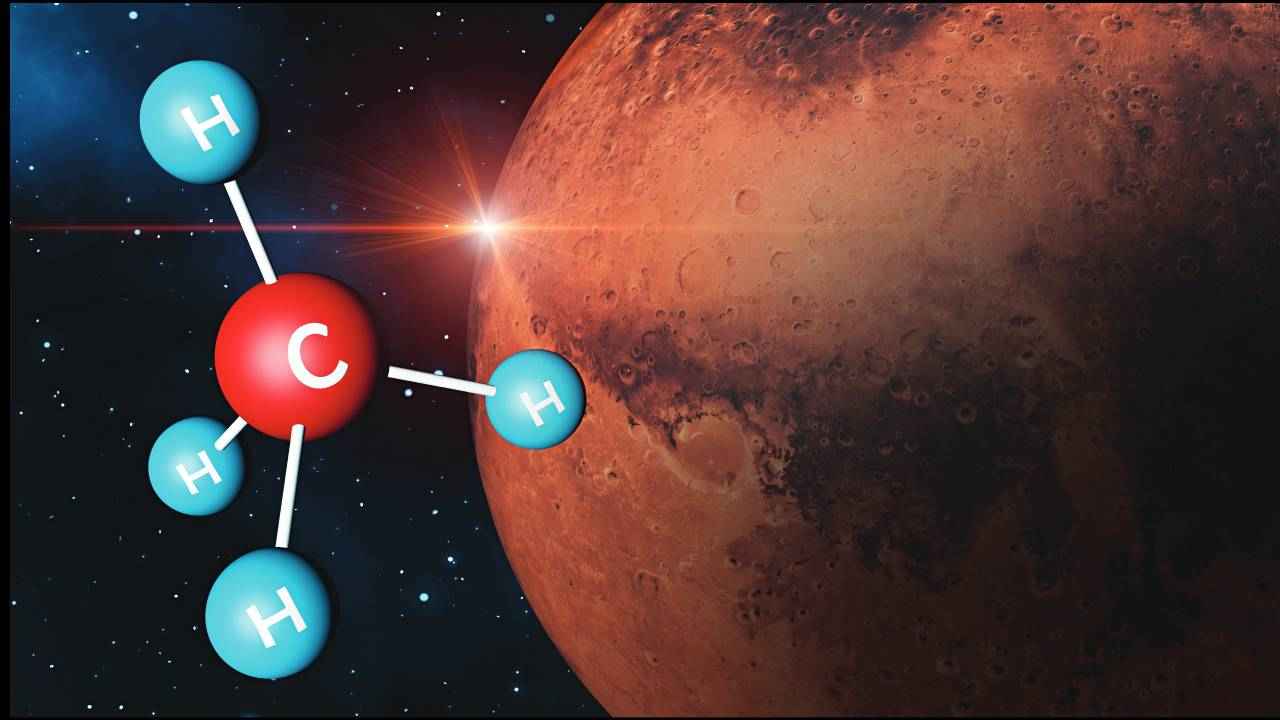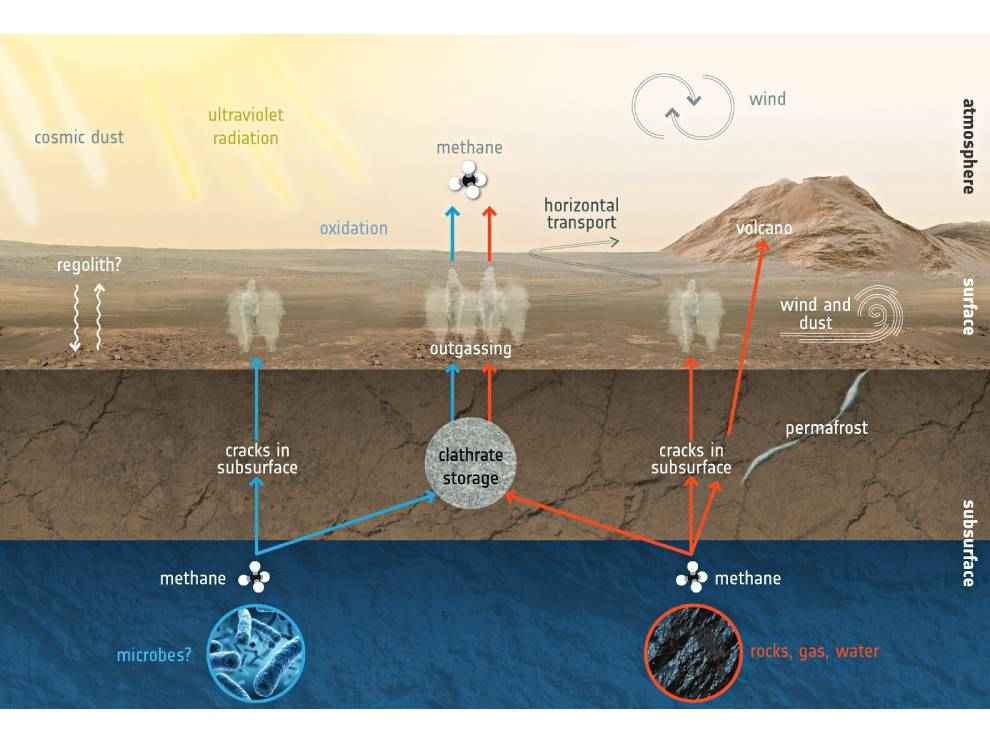Methane on Mars: Why there is so little of the gas on the Red Planet

Methane was first detected on Mars by ESA's Mars Express, in 2004. The Planetary Fourier Spectrometer (PFS) on board used spectroscopy to determine that the methane levels on Mars were 10 parts per billion by volume (ppbv). This means that for every billion molecules in the atmosphere of Mars, only 10 were methane. By comparison, Earth has a methane concentration of 1800 ppbv.
NASA's Curiosity rover detected a background level of 0.3 to 0.7 ppbv in 2012. In 2013 and 2019 Curiosity measured two spikes in methane over the background levels.
Methane is a biosignature, one of those chemicals that are produced by lifeforms. Even if the source of methane is biotic, it does not mean that those Martians are on Mars right now. The methane produced by ancient Martians might be trapped below the surface, which are now periodically being released. These traps could be made of solid forms of water, and are called clathrate hydrates. The region on Mars that Curiosity is studying, known as the Gale crater has been found to be an ancient lake bed, suitable for life in the distant past. In fact, all the regions where methane has been observed on Mars, Terra Sabae, Nili Fossae and Syrtis Major are associated with indications of ancient rivers.
Over the years, Curiosity has regularly measured the abundance of methane in the atmosphere. In 2018, after six Earth or three Mars years of study, Scientists released data measurements over time. The outgassing increase in the summer months, and decrease in the winter. Also, the methane levels appear to increase during the night, when the temperatures are lowest, and decrease during the day. From these trends, scientists can guess that the concentration of methane in the Martian atmosphere is tied to the exposure to sunlight. The outgassing is believed to increase in the summer months, and during the daytime, as the natural cracks in the regolith expand due to the rise in temperature. While announcing the seasonal variation of methane, Chris Webster of NASA’s Jet Propulsion Laboratory in California said, “This is the first time we’ve seen something repeatable in the methane story, so it offers us a handle in understanding it.“
One of discrepancies in the measurements was that the orbiters were not observing the same levels of methane as the rover. Now methane degrades on exposure to ultraviolet radiation. Curiosity was busy observing rocks in the day, and only measured methane levels at night. The Curiosity team did make an exception with a daytime measurement, but this was not during a spike. In any case, it was believed that the methane degrades in the atmosphere, which is why the orbiters were not detecting it. However, the methane was disappearing from the atmosphere too rapidly for UV radiation to be an adequate explanation. Apart from a mysterious origin, there is an as yet unknown process that rapidly removes methane from the atmosphere, as soon as it is dumped there.
Researchers from Aarhus University showed that the methane could bind with the minerals known to exist on the surface of Mars such as plagioclase and basalt. According to these researchers, the Methane was simply being absorbed by the ground again after outgassing. The mechanism is more effective than UV radiation at removing methane from the atmosphere.
ESA scientists have identified several possible natural processes by which methane could be removed from the atmosphere. The idea is that the methane seeps through the surface of the planet, finding its way to the rocks below again. The strong winds on Mars could dilute the concentrations of methane from local outgassing, making it difficult for orbiters and Earth based instruments to detect.
Over the course of the three Martian year study, Curiosity found another baffling measurement. During the summer months, the carbon dioxide is released from the polar caps, increasing the air pressure of the atmosphere. In winter, the air pressure reduces as the carbon dioxide freezes again. The concentration of nitrogen and argon predictably track the concentration of carbon dioxide. However, oxygen does not do this on Mars. The amount of oxygen in the atmosphere increases by 30 percent in the summer months, and reduces to expected levels in the winter months. This spike of oxygen in summer months is beyond any known chemistry. At least on some occasions, the fluctuations of the oxygen and methane seem to be in tandem. This makes some scientists wonder if the same processes are responsible for the variation in both oxygen and methane. This is a brand new enigma, one that the Curiosity team announced in November 2019. Melissa Trainer, a planetary scientist at NASA who led the research said, “This is the first time where we’re seeing this interesting behavior over multiple years. We don’t totally understand it. For me, this is an open call to all the smart people out there who are interested in this: See what you can come up with.”
Unfortunately, the Mars 2020 rover and the Rosalind Franklin rover both do not have payloads on board meant for the detection of methane, so the source of the methane is likely to remain a mystery for the next decade. The Trace Gas Orbiter is however, studying the concenteration of methane in detail. NASA, ESA, CNSA and Roscosmos have proposed sample return missions to the Red Planet in the 2030s, which may finally answer the question as labs on Earth will be able to determine if the methane is biological in origin or not, based on the particular isotopes of the elements in methane.
Aditya Madanapalle
Aditya Madanapalle, has studied journalism, multimedia technologies and ancient runes, used to make the covermount DVDs when they were still a thing, but now focuses on the science stories and features. View Full Profile





